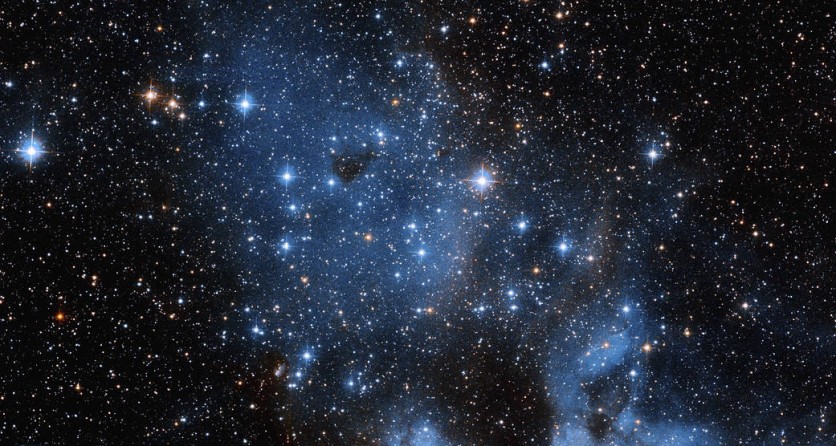NASA's Hubble Space Telescope captured an electric sea of stars glimmering against a background of pinpricks of light. The space agency released the star-striking image on Friday, Dec. 2, as its image of the day.
The electric picture features NGC 1858, an open star cluster in the Large Magellanic Cloud, a satellite galaxy of the Milky Way that is home to millions of star-forming areas. Astronomers believe that this cluster is around 10 million years old.

What Are Open Clusters?
NASA explains that open clusters are a kind of star cluster with a weak gravitational pull between the stars, resulting in an asymmetrical shape and dispersed stars.
Additionally, NGC 1858 is an emission nebula, a cloud of interstellar gas that has undergone ionization due to UV radiation from surrounding stars.
The nebula's gas creates its own light at visible wavelengths, which can be made out in this image as a hazy cloud in the middle and bottom right of the picture.
This young cluster is a complex collection because the stars are in various stages of evolution. The discovery of a protostar, a young developing star, within NGC 1858 suggests that star formation within the cluster may still be active or has only recently ended.
Since the energy needed to ionize the nebula's gas comes from stars with short lives, NASA said that the existence of an emission nebula also shows that star formation recently took place in the area.
NGC 1858, located in the constellation Dorado, is about 160,000 light-years away and is home to several large stars that can be seen blazing brilliantly at the heart of the image.
The cluster is surrounded by millions of stars and is situated in a busy region of the sky, making it challenging to examine alone. But thankfully, astronomers used the Hubble Space Telescope's exceptional sensitivity and resolution at visible and infrared wavelengths to scan these distant stars.
Read also : NASA'S Hubble and Chandra Xray Revives a Dead Star Back to its Original Form Before its Violent Explosion
Small and Large Magellanic Cloud
These galaxies were named in honor of the Portuguese explorer Ferdinand Magellan, whose crew found these companion galaxies during the first round-the-world expedition (1519-22).
Early in the 20th century, the Magellanic Clouds were identified as companion objects to the Milky Way Galaxy. However, they became independent systems after American astronomer Edwin Hubble proved they were extragalactic objects.
The Small Magellanic Cloud (SMC) is less than 2° wide, while the Large Magellanic Cloud (LMC) is a bright area with a diameter of roughly 5°.
In the Southern Hemisphere, the Magellanic Clouds are visible to the naked eye, although they are inaccessible from the majority of northern latitudes.
Related Article: NASA's Hubble Space Telescope Captures 'Butterfly Nebula' In Stunning Motion | Fun Facts About This Beautiful Space Butterfly





